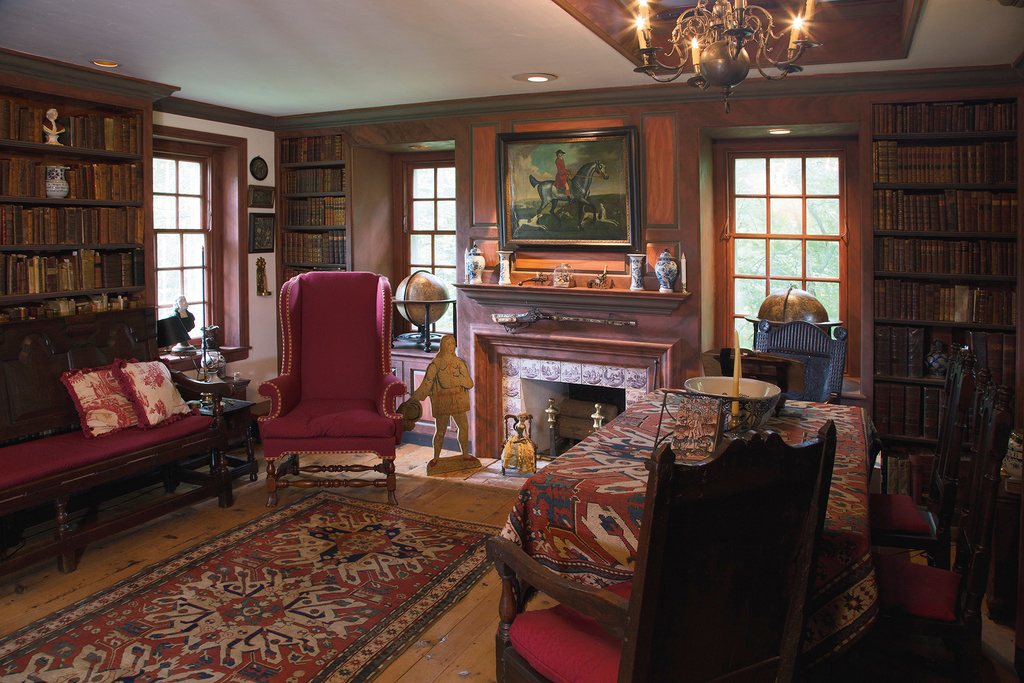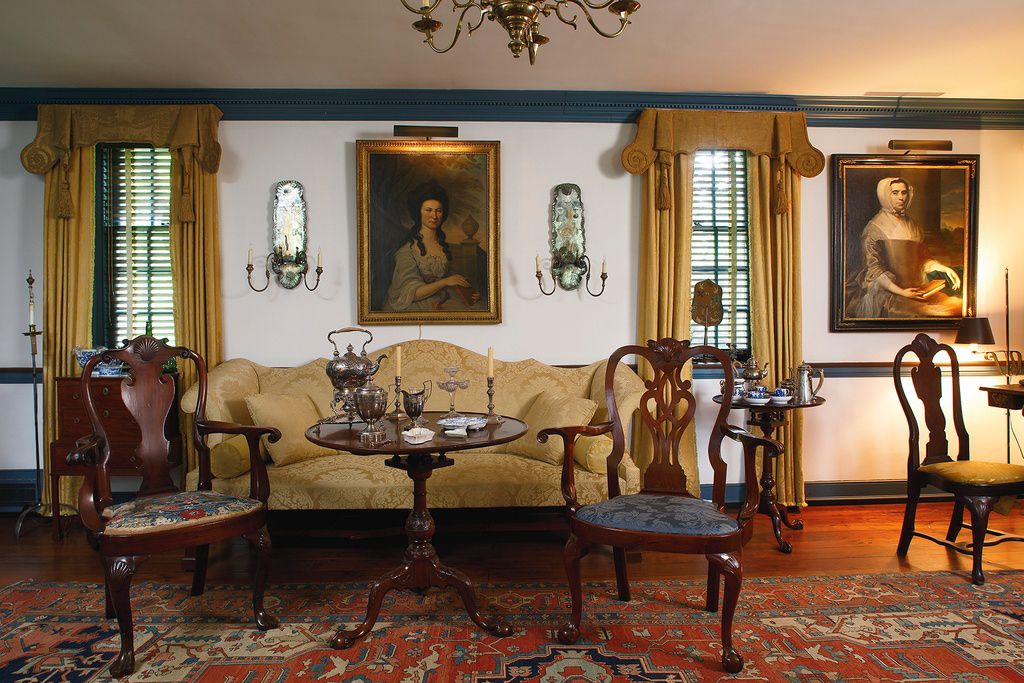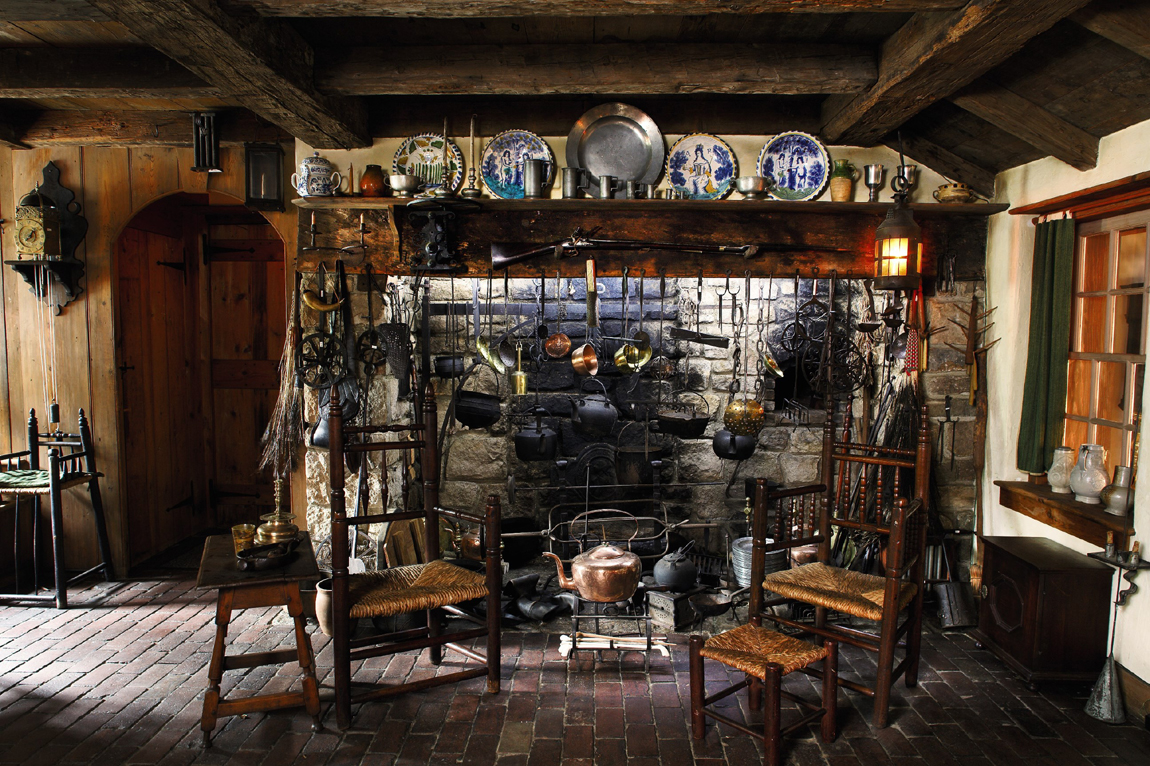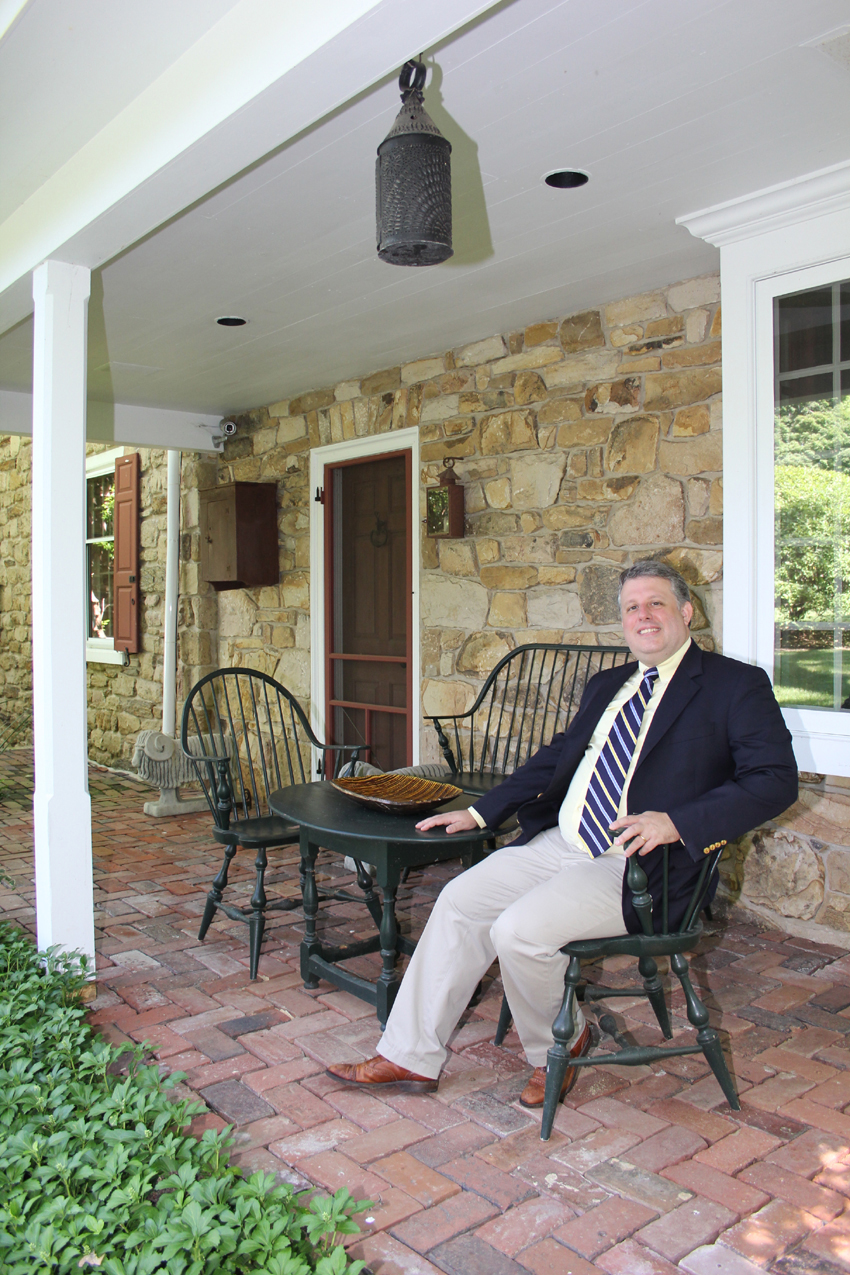
“It’s one of the greatest Americana collections ever assembled. There really hasn’t been a sale quite like this one since we sold the Jeffords collection in 2004 or the Little collection in 1994,” says Erik Gronning, head of Sotheby’s department of American furniture and decorative arts.
Contents Of Hidden Glen Farms Hit The Block January 20–22
By Laura Beach
Photos Courtesy Sotheby’s
MEADOWBROOK, PENN. — Alice Winchester’s compilation Living With Antiques, first published in 1941, and Helen Comstock’s 100 Most Beautiful Rooms in America of 1958 offered a consensus view of what it meant to be a “serious” collector of American antiques in the middle decades of the Twentieth Century.
Many of the aggregations documented by these classic volumes have since gone to museums or to auction. As the collectors faded away, so did their meticulous approach to creating period rooms. Though meant to replicate the past, these recreations are distinctively of their time, illustrative of an approach introduced by Henry Davis Sleeper at Beauport and perfected and popularized by Henry Francis du Pont at Winterthur.
Irvin and Anita Schorsch came at the tail end of the movement. After purchasing Hidden Glen Farms, a 1937 Colonial Revival country house designed by architect G. Edwin Brumbaugh (1890–1983), in Meadowbrook, Penn., in the early 1960s, they spent the next half century and the better part of their 62-year marriage filling it with Seventeenth through early Nineteenth Century furniture, paintings, prints, ceramics, glass, metalwork, textiles and needlework, accenting the mostly American trove with English, Dutch and Chinese pieces.
“It’s that whole notion of recreating Eighteenth Century atmosphere for the things that you are collecting, and attempting to display those things in context. Not everyone was Nina Fletcher Little at Cogswell’s Grant. Some collectors who wanted ambience had to create it. That feeling took a lot of work,” says the couple’s nephew, Woodbury, Conn., dealer David A. Schorsch.
Sotheby’s will auction much of the Schorsch estate over three days, Wednesday through Friday, in a five-session sale scheduled for January 20–22 during Americana Week in New York. Consisting of roughly 1,100 lots, the single-owner auction is expected surpass $10 million. Every lot will be sold without reserve, says Sotheby’s Americana head Erik Gronning.
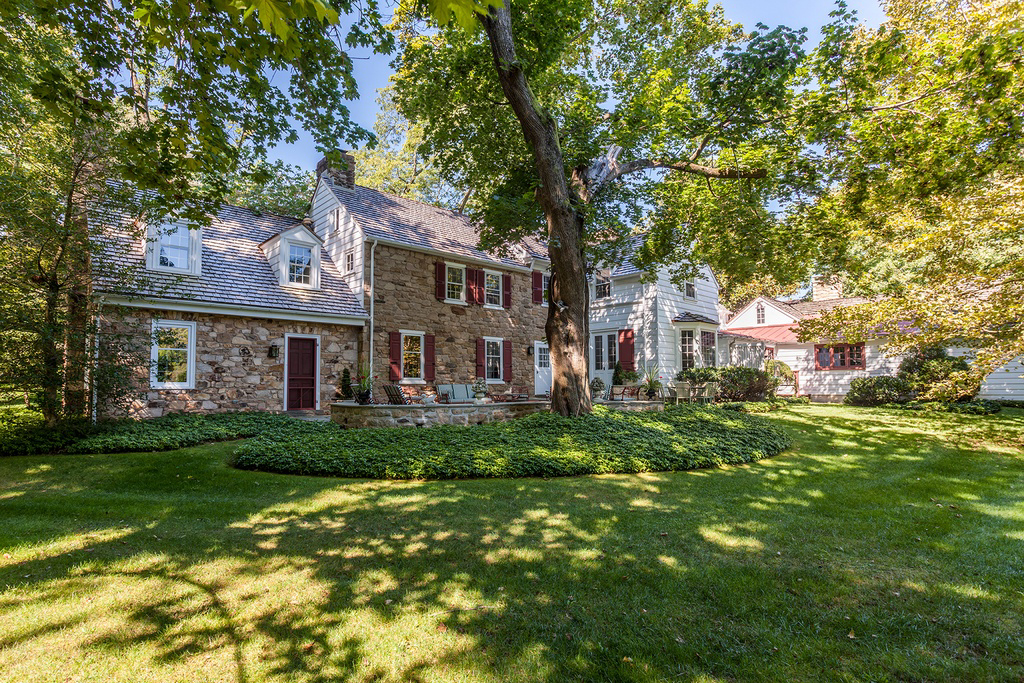
Architect G. Edwin Brumbaugh (1890–1983) designed Hidden Glen Farms in 1937. With guest house, tennis court, pool and barn-style garage, the 11-acre spread in Meadowbrook, Penn., is listed for $2.2 million through Sotheby’s International Realty.
“It’s one of the greatest Americana collections ever assembled. There really hasn’t been a sale quite like it. The last one we sold that was similar in scope was the collection of Mr and Mrs Walter M. Jeffords in October 2004. You really have to go back to the Little sales in 1994 to find such breadth and variety,” notes Gronning, who organized the auction with guidance from Elaine Whitmire and Tanya Hayes and the expertise of his colleagues Nancy Druckman, David MacDonald, John Ward, Derya Baykal and Christina Prescott-Walker.
The Schorsches also amassed an important library, which Sotheby’s plans to auction this spring. Anita Schorsch, whose doctoral degree was from Princeton, wrote Mourning Becomes America: Mourning Art in the New Nation and Images of Childhood: An Illustrated Social History, among other books on American material culture. The couple created a Museum of Mourning Art at a cemetery they inherited in Drexel Hill, Penn. Mourning art and jewelry are part of the January sale, as are marine art and artifacts from the Schorsches’ Avalon, N.J., beach house.
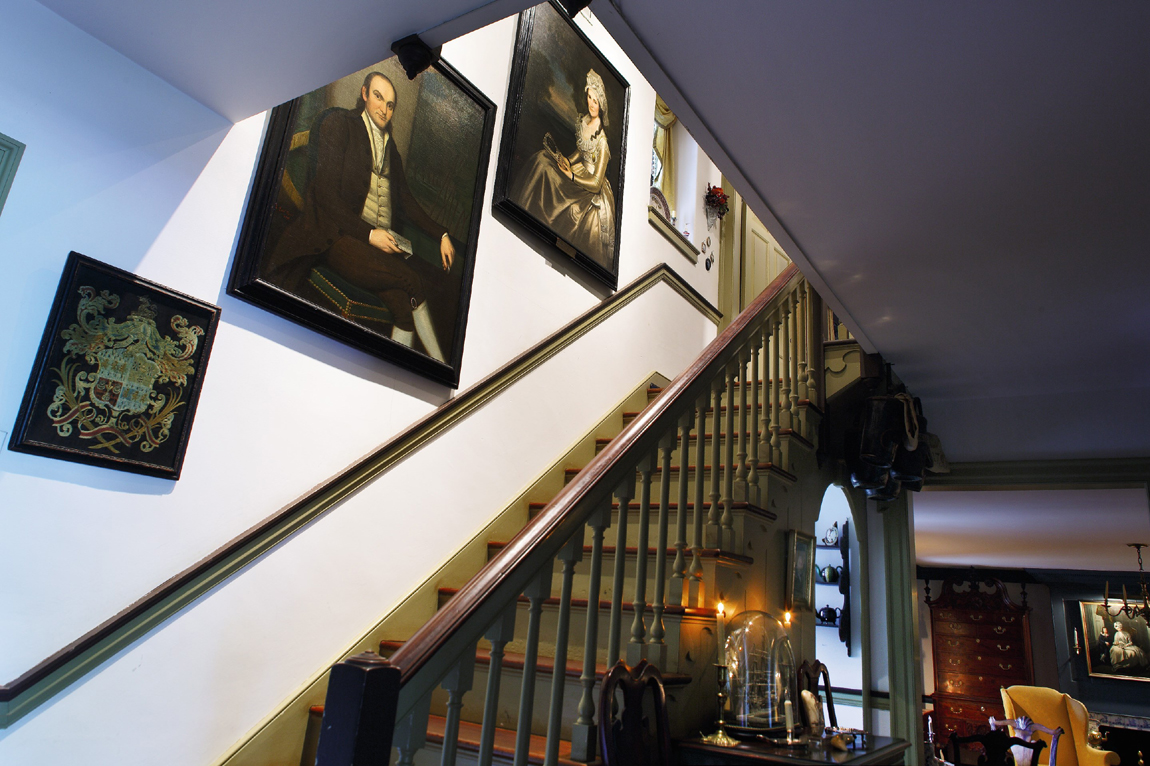
Ralph Earl’s well-documented portraits of Mr and Mrs Jared Lane (nee Apphia Ruggles), 1796, are estimated at $30/45,000.
A two-volume catalog, now available online and in print in early January, will accompany the sale. Organized by room and replete with fascinating tidbits on provenance, the publication benefits from Anita’s assiduous research and record-keeping, and forms a lasting account of a collection that was published in abbreviated form in Antiques and Fine Art and Architectural Digest.
As further tribute, Sotheby’s plans a daylong seminar on Monday, January 18. The program is free and open to the public. In addition to Gronning, Ward and Prescott-Walker, speakers will include Winterthur curators emeriti Charles F. Hummel and Donald Fennimore, architect John Milner, independent scholar and upholsterer Robert F. Trent, Katie McKinney, Ceramics in America editor Robert Hunter, Colonial Williamsburg curator Laura Barry, and textiles and needlework authority Tricia Nguyen.
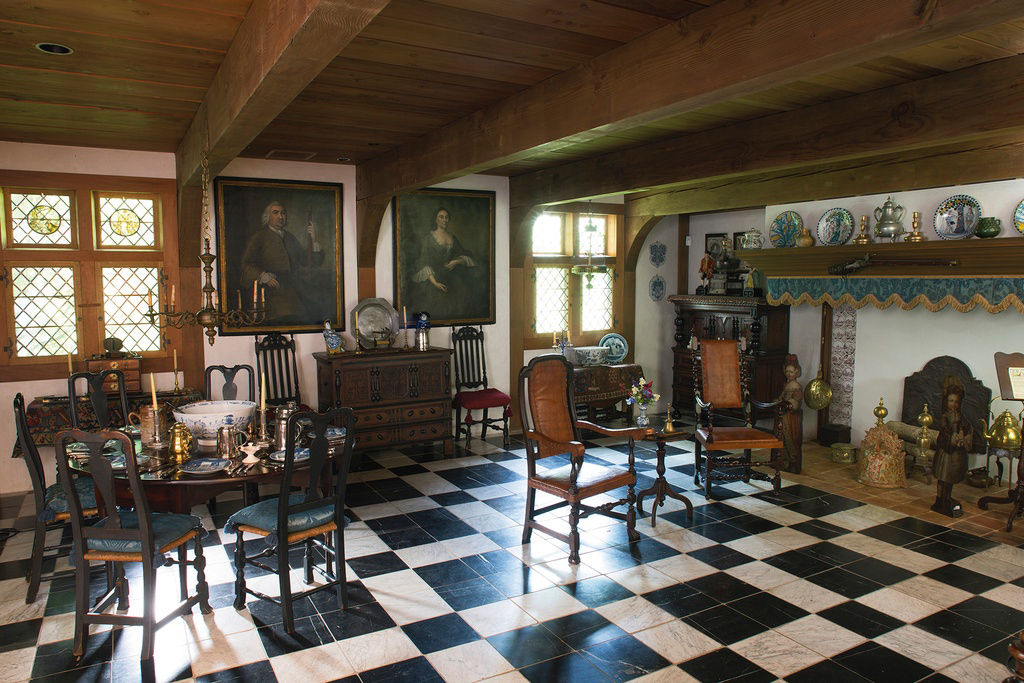
The Schorsches asked Roderic Blackburn, an expert on Hudson Valley Dutch art and architecture, to design a room inspired by the 1737 Van Alen house in Kinderhook, N.Y.
Irvin Garfield Schorsch Jr (1927–2014) was a Philadelphia native who prospered at the helm of a scrap-metals business founded by his grandfather. His wife, the former Anita A. Ulick (1930–2015), survived him by 13 months. Active supporters of Colonial Williamsburg and other historical organizations, the couple passed their love of collecting to their sons Irvin III, Peter and Nicholas.
Charles Hummel and his wife were close friends of the couple. As Hummel recalls, “In the mid-1960s, I was invited by Lita Solis-Cohen to talk about fakes and forgeries at Cheltenham High School in suburban Philadelphia. Anita and Irvin attended with their neighbor, John Batdorf, who convinced them they should decorate Hidden Glen with antiques rather than reproductions. John invited us back to his house and that is how we were introduced. From that point on, Irvin and Anita would ask me to take a look at things they were thinking of acquiring. I did that for them for 15 years until they didn’t need more advice. They would call and ask me to do some research in the Winterthur Library. They had open minds and were happy to entertain offers from many sources. They collected because they loved history and loved the forms, colors, designs and proportions.”
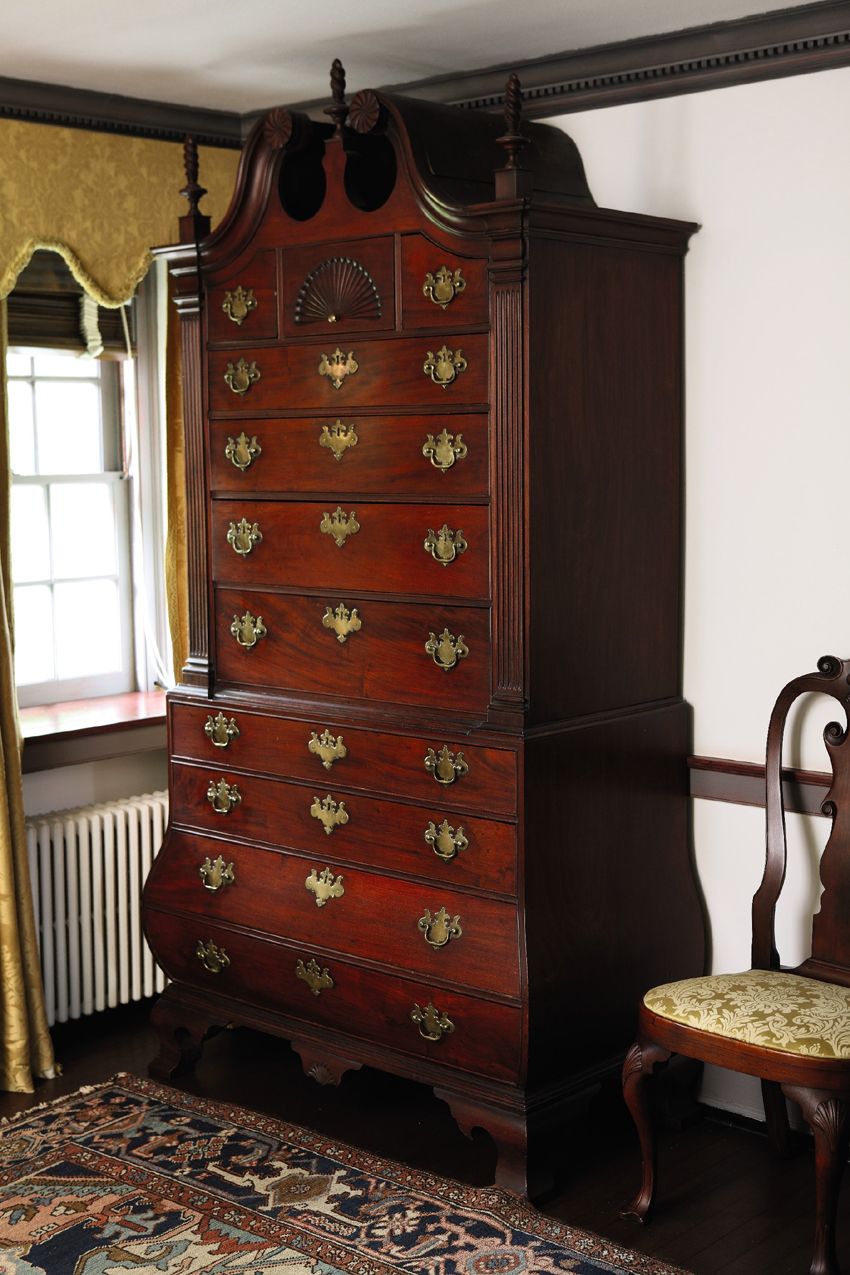
One sale highlight is this Chippendale carved and figured mahogany bombé chest on chest, Boston, circa 1765 ($800,000–$1 million).
Sale highlights include a William and Mary dressing table, easy chair and chest of drawers; a New York slab table and a six-leg, drop leaf table; a Lancaster, Penn., birdcage tea table; a Maryland sideboard by John Shaw of Annapolis; a circa 1739 paint decorated Taunton, Mass., chest that last surfaced at Northeast Auction’s 2002 sale of the Monahan collection; and a Massachusetts blockfront chest-on-chest by Benjamin Frothingham that came from Israel Sack, Inc. There are more than a dozen tall-case clocks and a half dozen spice chests. A Boston mahogany bombé chest-on-chest of circa 1765 may go for $1 million or more.
Gronning names other favorites: a great pair of Philadelphia Queen Anne side chairs with unusual stretchers, a New Hampshire Dunlap desk with carved shells and a fabulous pair of fire buckets. Hummel admires a circa 1750 Boston Queen Anne bed that originally belonged to the Revolutionary War general John Thomas. “The bed Mr du Pont slept in at Winterthur is by the same unidentified maker,” says the curator. The Schorsches had two other great beds, notes Gronning, a Rhode Island example, probably by Townsend, once owned by John Nicholas Brown, and a Massachusetts bed with detachable knees. All three beds come with period hangings.
There are portraits by Jeremiah Theus, Benjamin West, the Peale family and, expected to bring $30/45,000, a pair of 1796 likenesses of the Litchfield, Conn., couple Jared and Apphia Ruggles Lane by Ralph Earl.
The Schorsches loved Eighteenth Century English pottery, examples of which include a Staffordshire cream-colored earthenware arbor group of lovers, estimated at $40/60,000, and a circa 1760 delft punchbowl, probably from Bristol and expected to fetch $10/15,000.
Four embroidered English needlework caskets are key, as is a circa 1720 Boston filigree doubled-arched sconce acquired through Stephen and Carol Huber at Northeast Auctions and estimated at $150/$200,000. Much of the silver and some of the lighting are English.
Gronning concludes, “There are so many wonderful objects in the $20/80,000 range. The smalls are fabulous. There is such a diversity of early bits and bobs.”
We toured Hidden Glen with the Sotheby’s expert late last July. With the family gone, the sheep that once grazed the meadow were nowhere to be seen, but a menagerie of eagles, stags and other iron and zinc figures guarded the cobbled approach to the rambling stone residence enlarged for the Schorsches by architect John Milner.
Philadelphia’s early Twentieth Century society builders designed rooms that are smaller but, paradoxically, richer than our own, cozy interiors lavished with molding, paneling and hand-forged hardware. Off Hidden Glen’s intimately scaled foyer is a small dining room so loaded with Whieldon, Staffordshire, delft, early glass and silver that it seemed intrusive to enter.
Across the hall in a small sitting room were truly spectacular examples of needlework and choice Chinese export painting. A parlor hung with yellow silk yielded some of the couple’s proudest possessions: a Philadelphia high chest with an imposing bonnet, a birdcage tea table, a turret-top card table and a handsome pair of open armchairs. Researching the sale, Gronning turned up extensive documentary evidence on Polly Reed, who embroidered the silk panel on an important Boston pole screen previously in the collection of Mr and Mrs Lansdell K. Christie.
Tap rooms and keeping rooms were period-room staples. Brumbaugh endowed the Schorsches’ tavern room with a large beehive oven, used mainly for the display of antique iron, pewter and a rare, dated ceramic curfew for restraining the fire.
“The Schorsches had seen the circa 1737 Van Alen house in Kinderhook, N.Y., and asked me to design a great room for them,” says Roderic Blackburn. An authority on New York’s Hudson Valley, Blackburn designed what the couple called their Dutch Room. The collectors furnished it with a three-part kas from Kings County, N.Y., Eighteenth Century portraits, and a gate leg table loaded with delft, stoneware and silver. A circa 1740 Dutch or English birdcage fishbowl, the only known example, is a conversation piece.
“They loved the idea of doing a two-story library,” says Gronning, leading the way to the book-lined room furnished with an English wainscot bench, American heart-and-crown seats and a great, early William and Mary easy chair. Connected to the library via a galleried mezzanine, the family’s sleeping quarters would be termed austere were it not for their rich appointments.
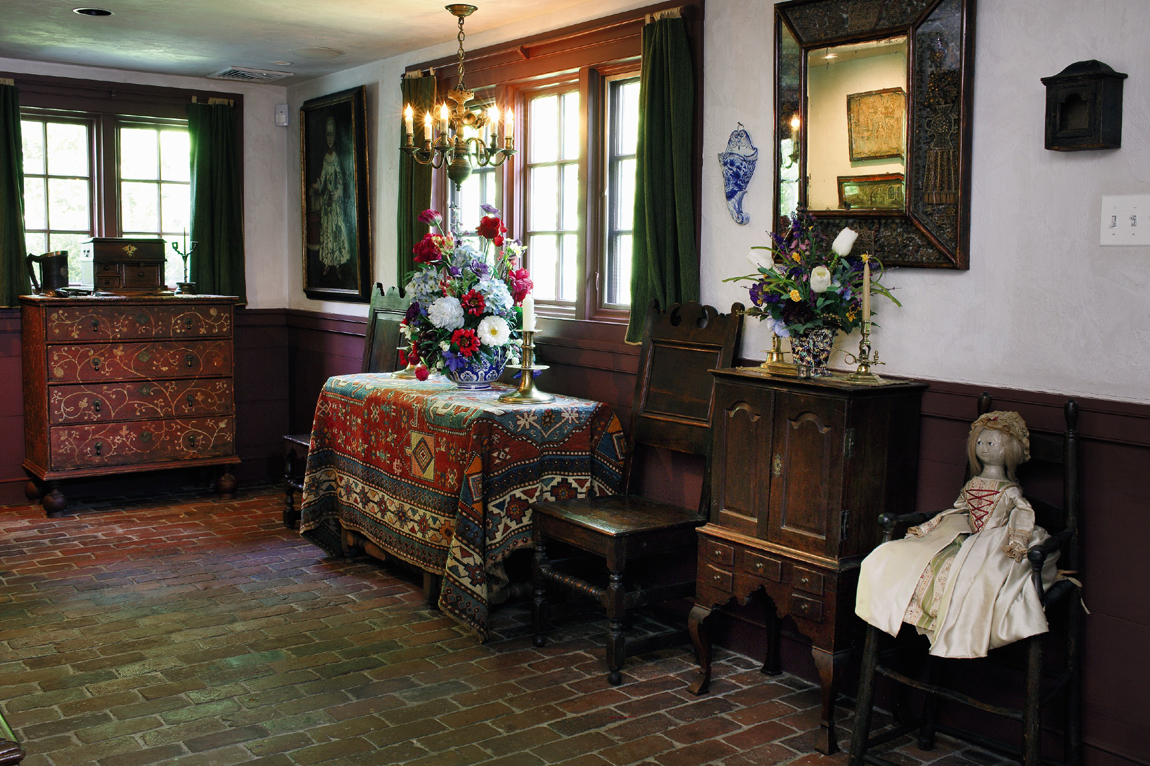
An early Eighteenth Century Taunton, Mass., painted chest of drawers and a filigree-embroidered mirror frame ornament a hall.
Sotheby’s sale of the Schorsch collection is a privileged window on a Camelot moment, a time when the desire to inhabit the past was an important part of the impulse to collect. In Gronning’s experience, the impulse is rare now. More engaged with objects than eras, collectors today more often take a masterpiece approach or zero in on niche interests.
Such change makes the upcoming sale all the more interesting — and less predictable. As David Schorsch acknowledges, “This was a lifetime collection and the market has shifted a bit. But these were very serious people. One hopes that the sale raises awareness of the field overall and educates the public.”
Hidden Glen is currently listed with the Sotheby’s International Realty affiliate Kurfiss of Bryn Mawr, Penn. The 11-acre acre spread comes with a guest cottage, swimming pool, tennis court, barn-style garage built to Brumbaugh’s specifications, a boxwood garden and wooded borders, all for the comparatively modest price of $2.2 million. Who knows? An enterprising collector might buy the house, repatriate its contents and revive the immersive approach to collecting that characterized the Americana movement during its most vibrant decades.
The collection will be displayed on five floors of Sotheby’s galleries and may be previewed between January 13 and 20. Sotheby’s is at 1334 York Avenue. For information 212-606-7000 or www.sothebys.com.

